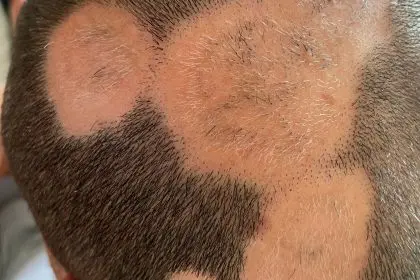A migraine attack can instantly derail your day, transforming normal activities into impossible tasks as pain, nausea, and sensitivity to light and sound take over. While medication remains a frontline defense, many migraine sufferers find combining traditional treatments with natural remedies offers the most comprehensive relief. These science-backed strategies can help you take control of your migraine pain without relying solely on prescription medications.
The difference between migraines and typical headaches
Migraines represent far more than an intense headache. These neurological events involve complex changes in brain chemistry and blood flow that trigger debilitating symptoms beyond head pain. The throbbing or pulsating sensation typically affects one side of the head and can last anywhere from four hours to three days if left untreated.
What separates migraines from regular headaches is their multifaceted nature. Many sufferers experience an “aura” before the pain begins – visual disturbances like flashing lights or blind spots that serve as warning signals. The attack phase often brings intense nausea, vomiting, and extreme sensitivity to environmental stimuli, making even dim lights and soft sounds unbearable.
This complex neurological event affects over 39 million Americans, with women experiencing migraines at three times the rate of men. Despite their prevalence, migraines remain widely misunderstood, leaving many sufferers feeling isolated in their pain.
7 home remedies worth trying for migraine relief
When migraine pain strikes, these natural approaches may provide meaningful relief alongside your regular treatment plan:
- Create a recovery sanctuary: When migraine symptoms begin, retreat to a dark, quiet room with minimal sensory stimulation. The reduction in light and sound can prevent worsening symptoms while giving your nervous system time to reset. Many migraine specialists recommend cool temperatures and blackout curtains for optimal relief. This simple intervention often proves surprisingly effective when paired with appropriate medication.
- Apply cold therapy strategically: A cold compress applied to your forehead, neck, or shoulders can significantly reduce migraine intensity. The cooling sensation helps constrict blood vessels and slow pain signals to your brain. For maximum benefit, wrap ice or a cold pack in a thin towel and apply for 15-20 minutes at a time, repeating hourly as needed. Some migraine sufferers find alternating cold and warm compresses provides additional relief.
- Practice acupressure techniques: Gentle pressure applied to specific points on your body can help alleviate migraine pain naturally. Try pressing the space between your thumb and index finger (known as the LI-4 pressure point) for five minutes while taking slow, deep breaths. Another effective spot is the depression at the base of your skull where your neck muscles connect. These techniques trigger your body’s natural pain-relieving mechanisms without medication.
- Incorporate magnesium supplements: Research consistently links magnesium deficiency to migraine frequency and severity. This essential mineral helps regulate neurotransmitters and blood vessel function – both crucial factors in migraine development. Starting with 400-500mg of magnesium oxide or magnesium citrate daily may reduce attack frequency by up to 41 percent according to clinical studies. Foods rich in magnesium include dark leafy greens, nuts, seeds, and whole grains.
- Add riboflavin to your regimen: Vitamin B2 (riboflavin) plays a vital role in cellular energy production, potentially preventing the energy crisis in brain cells associated with migraines. Taking 400mg daily has demonstrated impressive results in clinical trials, with participants experiencing fewer migraine days and reduced need for rescue medications. This water-soluble vitamin is generally well-tolerated, though it may cause harmless yellowing of urine.
- Use caffeine strategically: A cup of strong coffee can enhance the effectiveness of over-the-counter pain relievers by up to 40 percent. Caffeine constricts blood vessels and reduces inflammation, potentially interrupting the migraine cascade when consumed early in an attack. However, this remedy requires careful balance – regular caffeine consumption can lead to dependency, while sudden withdrawal often triggers severe migraines. Limit your intake to no more than 200mg daily (about two cups of coffee).
- Explore CoQ10 supplementation: This powerful antioxidant supports cellular energy production and may prevent the oxidative stress involved in migraine development. Studies suggest taking 300mg of Coenzyme Q10 daily can reduce migraine frequency by up to 50 percent after three months of consistent use. Though generally safe, this supplement may interact with blood thinners and requires consultation with a healthcare provider before starting.
Lifestyle changes that prevent future attacks
Beyond treating active migraines, certain daily habits can significantly reduce how often they occur:
Maintain consistent meal timing: Skipping meals or fasting triggers blood sugar fluctuations that can precipitate migraines. Try eating small, frequent meals throughout the day rather than three large ones. Include protein with each meal to stabilize blood glucose levels, and keep emergency snacks readily available to prevent hunger-induced attacks.
Develop a personalized stress management routine: Stress remains among the most common migraine triggers, making effective management essential for prevention. Practices like progressive muscle relaxation, guided imagery, and mindfulness meditation can reduce stress hormone levels that contribute to migraine development. Even five minutes of deep breathing daily can make a meaningful difference in attack frequency.
Prioritize hydration: Dehydration ranks among the most preventable yet common migraine triggers. Aim for at least eight 8-ounce glasses of water daily, increasing intake during exercise or hot weather. Monitoring urine color provides a simple assessment – pale yellow indicates proper hydration, while darker shades suggest you need more fluids. Consider setting phone reminders to drink water throughout your day.
Establish sleep consistency: Both inadequate and excessive sleep can trigger migraines. Create a consistent sleep schedule by going to bed and waking at the same times daily, even on weekends. The average adult needs 7-9 hours nightly for optimal brain function. Enhance sleep quality by keeping your bedroom cool, dark, and free from electronic devices that disrupt natural melatonin production.
Engage in regular, moderate exercise: Physical activity releases endorphins – natural pain-relieving compounds that can prevent migraines. Start with low-impact options like walking, swimming, or cycling for 30 minutes three times weekly, gradually increasing duration and intensity. Be cautious with extremely vigorous exercise, which can trigger migraines in some individuals through rapid blood pressure changes.
Track your personal triggers: Environmental and dietary factors that spark migraines vary widely between individuals. Common culprits include aged cheeses, processed foods, artificial sweeteners, wine, and strong perfumes. Maintaining a detailed migraine journal helps identify your unique triggers. Note foods consumed, weather changes, stress levels, and sleep patterns surrounding each attack to recognize patterns.
Consider weather-related precautions: Barometric pressure changes frequently precede migraine attacks in sensitive individuals. While you cannot control the weather, proactive measures during changing conditions can help. Taking preventive medication before anticipated weather shifts, using specially designed earplugs that regulate pressure changes, and temporarily relocating during extreme weather events may reduce weather-triggered episodes.
When to consult a healthcare provider
While home remedies offer valuable support, certain situations warrant immediate medical attention. Seek emergency care for any headache described as “the worst of your life,” accompanied by fever, stiff neck, confusion, or occurring after head trauma. These symptoms may indicate serious conditions requiring urgent treatment.
For non-emergency situations, schedule an appointment with your healthcare provider if migraine patterns change significantly, attacks become more frequent or severe, or previously effective treatments stop working. The expanding array of migraine-specific medications and treatment approaches offers hope even for those with treatment-resistant cases.
Remember that managing migraines effectively often requires a comprehensive approach combining medical treatment with lifestyle modifications and natural remedies. By working closely with healthcare providers while implementing these evidence-based strategies, most migraine sufferers can achieve significant improvement in their condition and reclaim control of their lives.














